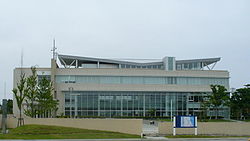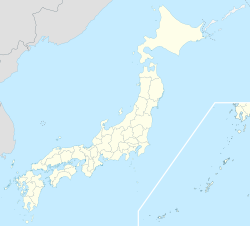
Shiogama is a city located in Miyagi Prefecture, Japan. As of 1 June 2019, the city had an estimated population of 52,662, and a population density of 3,032 persons per km² in 23,270 households. The total area of the city is 17.37 square kilometres (6.71 sq mi).

Natori is a city located in Miyagi Prefecture, Japan. As of 31 May 2020, the city had an estimated population of 79,459 in 31,748 households, and a population density of 810 persons per km². The total area of the city is 98.17 square kilometres (37.90 sq mi).
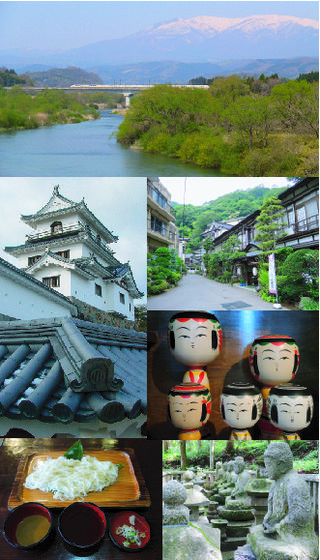
Shiroishi is a city in Miyagi Prefecture, Japan. As of 31 May 2020, the city had an estimated population of 33,330 and a population density of 120 persons per km2 in 14,242 households. The total area of the city is 286.48 square kilometres (110.61 sq mi).

Higashine is a city located in Yamagata Prefecture, Japan. As of 1 February 2020, the city had an estimated population of 47,910 in 17868 households, and a population density of 230 persons per km². The total area of the city is 207.17 square kilometres (80 sq mi).

Sōma is a city located in Fukushima Prefecture, Japan. As of 29 February 2020, the city had an estimated population of 34,631, and a population density of 180 persons per km2 in 14,358 households. The total area of the city is 197.79 square kilometres (76.37 sq mi).

Kitaibaraki is a city in Ibaraki Prefecture, Japan. As of 1 July 2020, the city had an estimated population of 41,750 in 17,034 households and a population density of 220 persons per km2. The percentage of the population aged over 65 was 34.6%. The total area of the city is 186.80 square kilometres (72.12 sq mi).
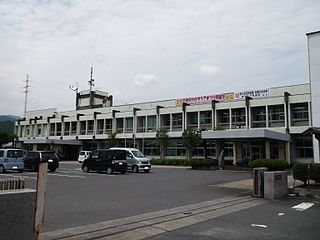
Hanawa is a town located in Fukushima Prefecture, Japan. As of 1 January 2020, the town had an estimated population of 8,369 in 3301 households, and a population density of 40 persons per km2. The total area of the town was 211.41 square kilometres (81.6 sq mi).

Hirono is a town located in Fukushima Prefecture, Japan. As of 31 March 2020, the town had an official registered population of 4755 in 2267 households, and a population density of 81 persons per km2. The total area of the town is 58.69 square kilometres (22.66 sq mi).
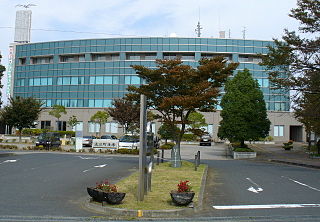
Namie is a town located in Fukushima Prefecture, Japan. As of 29 February 2020 the town has a population of 1,238 in 794 households, although the official registered population was 17,114 in 6853 households. The total area of the town is 223.14 square kilometres (86.15 sq mi). The town was evacuated as a result of the Fukushima Daiichi nuclear disaster—being directly downwind from the power plant—and was within the exclusion zone set up in response to the disaster. Following ongoing clean-up efforts, Namie's business district and town hall have reopened, but access to more heavily contaminated western parts of the town remains restricted as decontamination continues to be carried out.
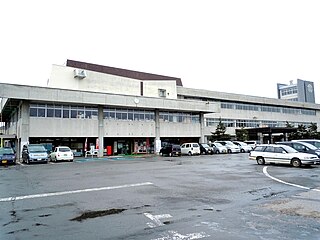
Takahata is a town located in Yamagata Prefecture, Japan. As of 1 April 2019, the town had an estimated population of 23,367, in 7629 households, and a population density of 130 persons per km2. The total area of the town is 180.26 square kilometres (70 sq mi).
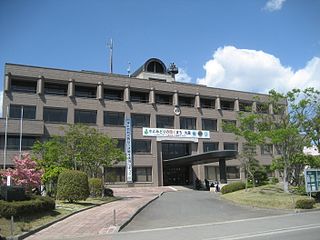
Marumori is a town located in Miyagi Prefecture, Japan. As of 1 June 2020, the town had an estimated population of 13,092, and a population density of 48 persons per km2 in 5,050 households. The total area of the town is 273.30 square kilometres (105.52 sq mi).

Watari is a town located in Miyagi Prefecture, Japan. As of 31 March 2020, the town had an estimated population of 33,459, and a population density of 450 persons per km2 in 12,643 households. The total area of the town is 73.60 square kilometres (28.42 sq mi).

Yamamoto is a town located in Miyagi Prefecture, Japan. As of 31 May 2020, the town had an estimated population of 12,100, and a population density of 190 persons per km2 in 4794 households. The total area of the town is 64.58 square kilometres (24.93 sq mi).

Ōhira is a village located in Miyagi Prefecture, Japan. As of 31 May 2020, the village had an estimated population of 5,918, and a population density of 98 persons per km2 in 2108 households. The total area of the village is 60.32 square kilometres (23.29 sq mi).

Tome is a city located in Miyagi Prefecture, Japan. As of 30 April 2020, the city had an estimated population of 77,897 and a population density of 150 persons per km2 in 27,298 households. The total area of the city is 536.12 square kilometres (207.00 sq mi). The area is noted for its rice production.

Higashi-Matsushima is a city located in Miyagi Prefecture, Japan. As of 1 June 2020, the city had an estimated population of 39,580 in 16102 households, and a population density of 390 persons per km2. The total area of the city is 101.36 square kilometres (39.14 sq mi).

Minamiaizu is a town located in Fukushima Prefecture, Japan. As of 1 April 2020, the town had an estimated population of 15,158 in 6,575 households, and a population density of 17 persons per km2. The total area of the town was 886.52 square kilometres (342.29 sq mi).

Komagamine Station is a railway station in the town of Shinchi, Fukushima Prefecture, Japan, operated by East Japan Railway Company.

Shinchi Station is a railway station in the town of Shinchi, Fukushima Prefecture, Japan, operated by East Japan Railway Company. Operation of the station was suspended due to severe damage to the railway and station facilities caused by the 2011 Tōhoku earthquake and tsunami in March 2011. The station reopened at a new location in December 2016.

Hamadōri (浜通り) is the easternmost of the three regions of Fukushima Prefecture, Japan, the other two being Nakadōri in the central area of the prefecture and Aizu in the west. Hamadōri is bordered by the Abukuma Highlands to the west and the Pacific Ocean to the east.
